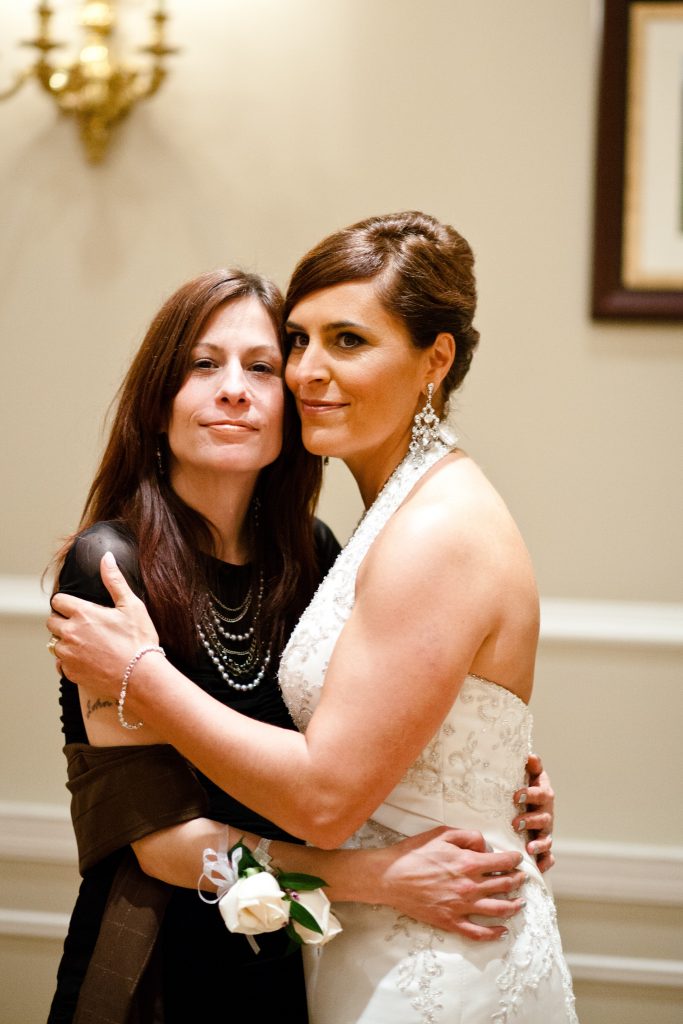Coroner’s report reveals camera ‘turned away’ during woman’s altercation with hospital security
Posted December 1, 2020 5:24 am.
Last Updated December 1, 2020 8:11 pm.
The family of a woman who died after an altercation with security guards at Toronto General Hospital last May is demanding accountability after learning new, “gut-wrenching” details about her death.
An Ontario Coroner’s report found that Danielle Stephanie Warriner, 43, died as a result of a brain injury consistent with “restraint asphyxia” after a violent struggle with four guards that was partially captured on surveillance video.
The Coroner’s investigation revealed that a surveillance camera was “purposely turned away” during the altercation.
Warriner died less than a few weeks later.
“Something’s got to happen,” Warriner’s sister, Denise told CityNews. “Some action needs to be taken.”
Warriner, who family refer to as “Stephanie” was in the lobby of the hospital on May 11 when she was approached by a team of four security guards. According to the report, a “verbal exchange” took place between her and a female guard before she is pushed against a wall.
At that point “video footage moves away from the scene” and the next two-and-a-half minutes aren’t captured.
After seeking answers for months, Toronto police allowed Denise to view the security footage of the incident that does exist.
“One of the security guards aggressively and violently grabs my sister and crushes her face first into a concrete wall,” she said. “I don’t know if I’ve ever experienced gut-wrenching horror. In my life, I didn’t understand what those words meant until I saw that video. You can’t help but replay those traumatic images, over and over, in your mind. It haunts me.”

When the security camera returns to its position, the coroner’s report said Stephanie “appears limp” while she’s handcuffed and put in a wheelchair.
They then move into another hallway near some service elevators where she is given CPR and resuscitated after 10 minutes. At that point, she was intubated and transferred to intensive care.
The report determined that “this case fits death due to restraint asphyxia” and she died as a result of a brain injury due to a lack of oxygen.
Warriner did suffer from a pre-existing respiratory condition and had been in the hospital twice in the weeks leading up to the incident. She was also diagnosed as bipolar, had mental health issues and dealt with drug use in the past but her sister said she was seeking help. “I will say she tried really hard,” Denise said. “She was part of different groups. She was committed.”

Danielle Stephanie Warriner and her sister, Denise. Photo provided by family.
According to a spokesperson from the University Health Network, two staff members involved with the case are no longer working with UHN. Two others have reportedly faced disciplinary action.
In a statement sent to UHN employees last week, President and CEO Kevin Smith acknowledged the incident saying: “to have this happen while Ms. Warriner was a patient in our hospital is disturbing and distressing to everyone.”
The message refers to Toronto police involvement and said “we will offer to meet with the family to go over what we have learned, the recommendations from the investigations, and the actions we must take in response” when it’s concluded.
“What the video showed me is that there is a culture of this behavior,” Denise said. “This is a culture and even the persons who might not have been directly involved in the attack, there’s a complicity here.”
Denise’s expectation is that criminal charges will be laid and some sort of internal review will take place at UHN.
“I won’t give up,” she said. “I will continue to fight for her and for the rest of us. There needs to be accountability and change.”
Toronto police have not yet responded to a request for additional information.








